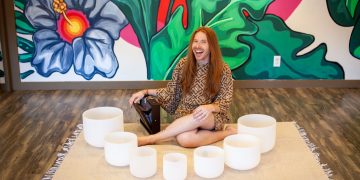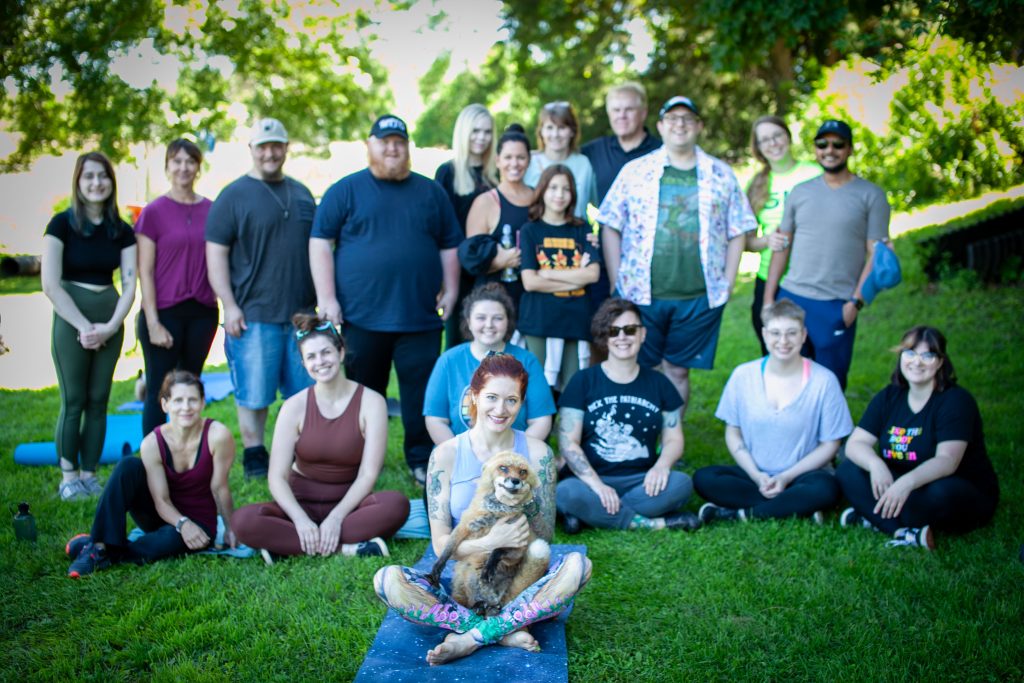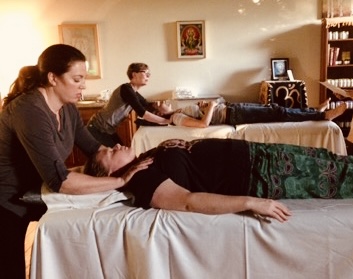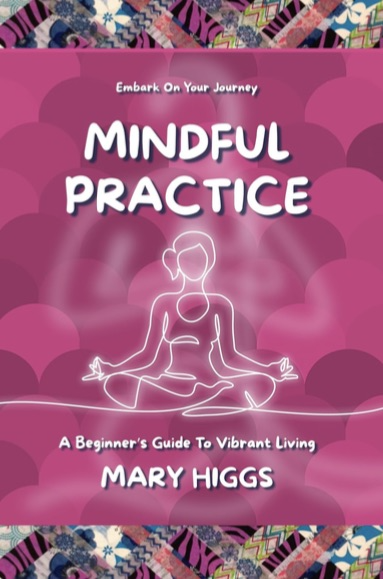Over the past few years, sound therapy—the practice of using frequency and vibration to sooth and stabilize the nervous system—made its way into yoga studios, therapy sessions, retreats, and meditation spaces across the county. As ancient as yoga itself with deep roots in cultures around the world, the more recent understanding of the science behind sound healing garnered a new appreciation and expanded audiences.
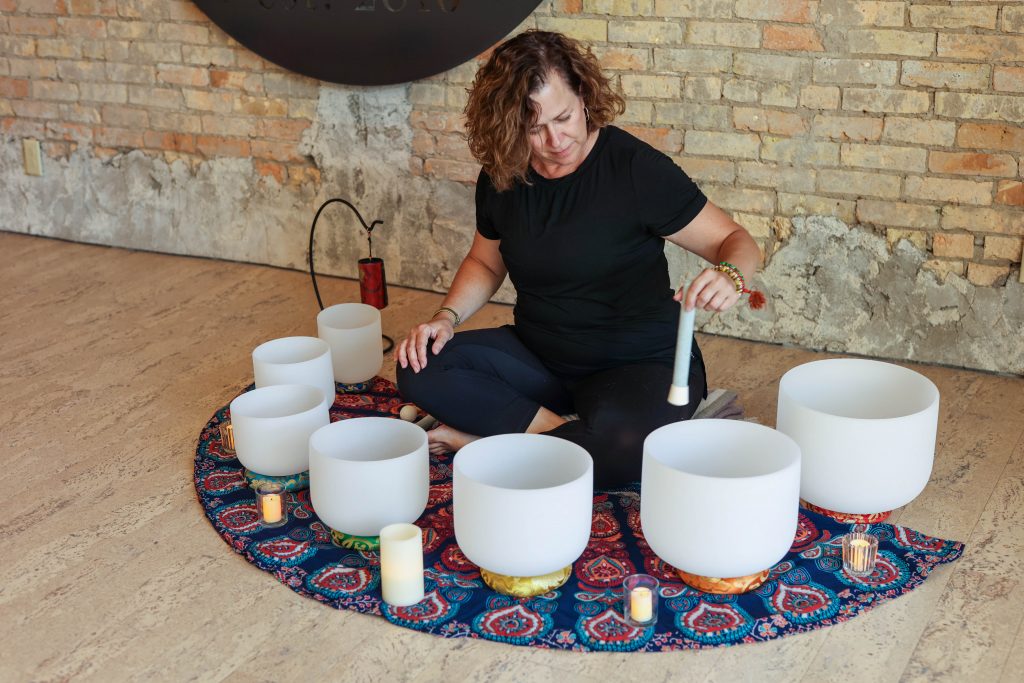
History of Sound Therapy
Tibetans have used metal singing bowls and other instruments for healing for more than 2,000 years. In ancient Greece and Egypt, physicians believed the vibrations absorbed from flutes and lyres could treat and prevent medical conditions including mental disorders, indigestion, and insomnia. Beginning in the Middle Ages, cathedrals were built with bell towers, believing those acoustics would bring people closer to the Divine. Researchers began to study the correlation between music and healing toward the end of the 19th century. Today, sound therapies around the world widely use singing bowls, chimes, and other instruments.
What is a Sound Bath?
More recently, sound therapy sessions are often referred to as “sound baths”. Typically, you either lie or sit in a comfortable position while a variety of instruments, including singing bowls, chimes, and gongs, create layers of sounds and vibrations that help relax the nervous system and calm the mind.
Don’t expect a musical symphony when you settle in for a sound bath. The different tones and frequencies you’ll hear don’t typically include a melody or beat the mind can hook onto like music does. Some tones may feel good as their vibration passes through you, some may feel uneasy. How and where you feel the vibration is thought to indicate where energy is moving or blocked in the body.
Benefits of Sound Therapy
Multiple research studies prove the benefits of sound therapy practices. One study published in SAGE Journal (journals.sagepub.com) established that sound meditation helped improve participants’ moods and decreased their levels of anxiety, tension, anger, and fatigue. Research credits this to the stimulation of the vagus nerve, our body’s superpower for regulating the nervous system. Sound therapy, like other meditation practices, helps to flip the switch from sympathetic response (fight or flight) to parasympathetic response (rest and digest), ushering in a sense of peace and calm.
Getting the Most Out of Your Sound Bath Experience
Many yoga and other wellness studios offer sound bath experiences. A simple Google or Facebook search may be your best bet for locating one near you. Sound bath tracks are available on many listening services, however, to experience the true vibrational healing effects, it’s best to attend a live in-person session.
What to bring? Plan to arrive early, dress comfortably, and bring a mat, blanket, pillows, etc. to create a comfortable “nest” for yourself. Also remember to come hydrated, since sound travels better through water – including a well-hydrated body.
Set an intention. Sound bath leaders often offer a theme or guided meditation at the start of a session to help participants find focus. If your mind starts to wander, and it will, remind yourself to use your breath and your intention as your anchors.
Plan a gentle re-entry. At the close of a sound bath, you may feel dreamy and relaxed, so take your time to “come out” of the sound bath. Consider attending an evening sound bath, then head home to sleep without focusing on screens or devices.
My Evolution from Yoga Teacher to Sound Therapist
As a yoga instructor for the past 20 years, I often incorporated chimes and singing bowls in my classes. Through the years, that dabbling in sound and frequency evolved into a passion and in 2021 I became a Certified Sound Therapy & Sound Healing Practitioner. A year later, together with my sister, Lila Marquart (fernshadowstudio.com), also certified in sound therapy, we created Soul Sister Sound Baths. We have been blown away by the interest, as well as the impact on attendees. The beauty is even someone who never meditated before or felt comfortable in a yoga class can receive the calming effects of this collective experience: finding time to just be in community, to be still, to listen and explore their own inner world. No phones, no scrolling, just you… bathed in sound.
Paula has been teaching yoga for over 20 years, completing her 500-hour RTY certification in October 2021, specializing in SomaYoga. She is also a certified Sound Bath Practitioner and meditation teacher. Living in Albany, Minnesota, she enjoys sharing the challenge, peace, and acceptance a yoga practice can bring to students across Central Minnesota. Along with her sister, Lila, they created Soul Sister Sound Baths and offer specialty sound experiences at events, retreats, and studios in the area. When she’s not on her mat, Paula enjoys time spent with family, her Goldendoodle, Sully, and her Siamese cat, Minx.



